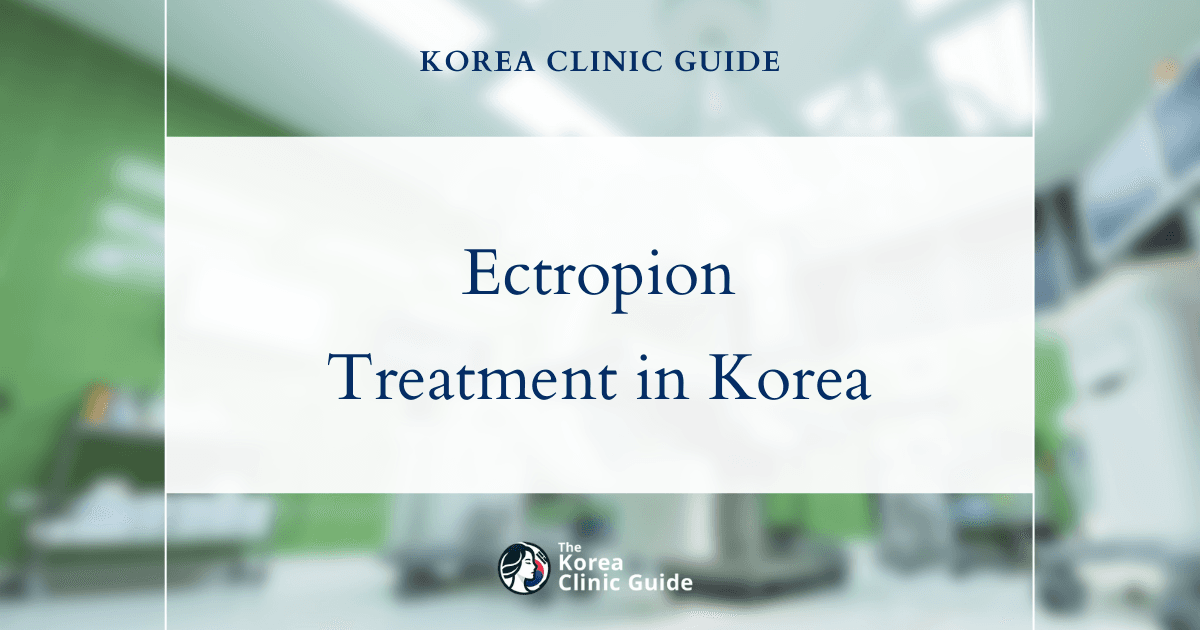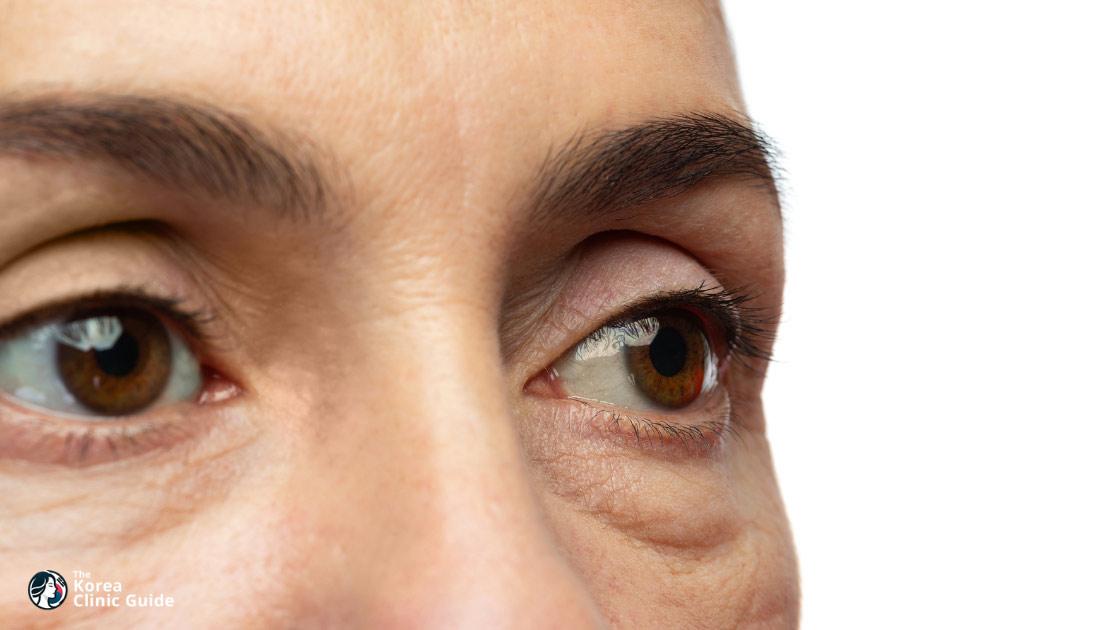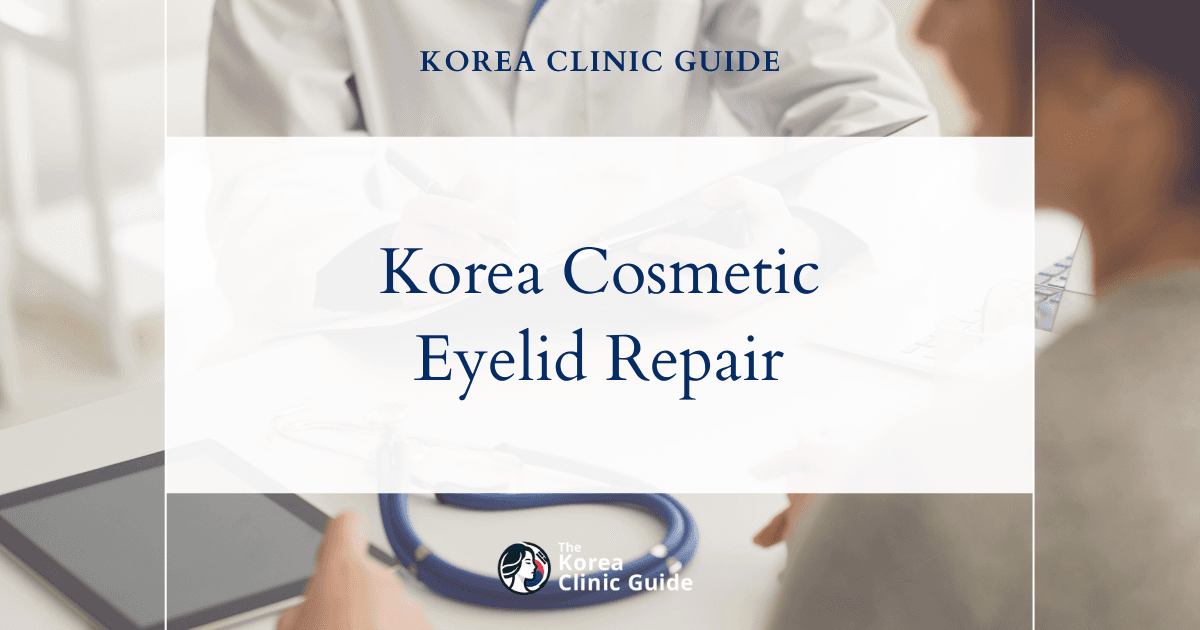Medical Tourism Blog
Effective Under Eye Bag Treatments in Korea: Blepharoplasty, Fat Removal & Grafting Options
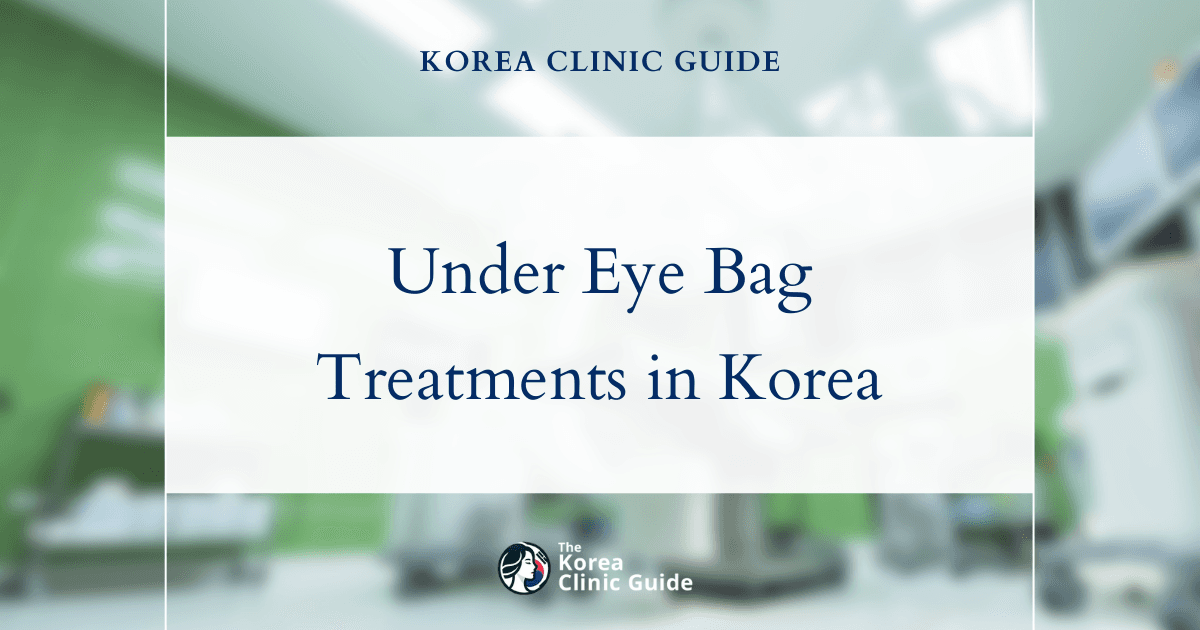
Table of contents
- Detailed Medical Procedures for Under-Eye Bags
- Best Clinics in Korea for Undereye Bags
- Medical Tourism in South Korea: A Practical Guide
- Patient Experiences and Outcomes
- Conclusions and Recommendations
- References
Under-eye bags, often seen as puffiness beneath the eyes, are a common cosmetic concern. They usually appear as mild swelling, saggy or loose skin, and sometimes dark circles. For most people, these changes are purely aesthetic and don’t indicate serious health issues. Knowing this can ease worries and help patients focus on improving their appearance rather than worrying about medical problems.
Under-eye bags form mainly because the tissues and muscles supporting the eyelids weaken over time, a natural part of aging. As these supports weaken, the fat cushioning the eye can shift forward, causing puffiness. Fluid buildup beneath the eyes can also add to the swollen look.
When researching this condition, patients encounter many terms. Besides "under-eye bags" and "puffiness beneath the eyes," medical terms include "Periorbital Dark Circles," "Infraorbital Venous Stasis," "Periorbital Hyperpigmentation," "Genetic Darker Eyelids/Undereyes," "Periocular Melanosis," "Cutaneous Hyperchromia," "Under-Eye Dark Circles (DUEC)," and "Peri-orbital Hypermelanosis." Many of these relate to dark pigmentation, showing that patients often see under-eye bags as a mix of volume issues (the bags) and discoloration (dark circles). This means effective treatment may need to address both fat and pigmentation for the best results.
Table 1: Common Pseudonyms for Under-Eye Bags
| Category | Terms |
|---|---|
| Common Term | Dark Circles, Puffiness beneath the eyes, Under-Eye Bags |
Several factors can cause or worsen under-eye bags:
- Aging: The main cause, leading to weaker tissues and muscles around the eyes.
- Fluid retention: Noticeable after waking or salty meals; conditions like chronic sinusitis can also cause puffiness.
- Lack of sleep: Causes blood vessels to dilate, making dark circles more visible.
- Allergies: Trigger inflammation, swelling, and sometimes itching around the eyes.
- Smoking: Harms skin health and slows healing, worsening under-eye bags.
- Genetics: Family traits can cause bags even in younger people.
- Medical conditions: Issues like dermatitis, dermatomyositis, kidney disease, and thyroid eye disease can contribute.
Because causes range from aging and genetics to lifestyle and health conditions, treating under-eye bags often requires multiple approaches. Surgery can fix structural problems, but lifestyle changes—like better sleep, diet management, allergy control, and quitting smoking—are key for prevention and maintaining results. This holistic view is important when planning treatment.
Detailed Medical Procedures for Under-Eye Bags
Surgical options effectively address under-eye bags and related concerns. The main procedures are blepharoplasty (eyelid surgery), under-eye fat removal or repositioning, and under-eye fat grafting.
Blepharoplasty (Eyelid Surgery)
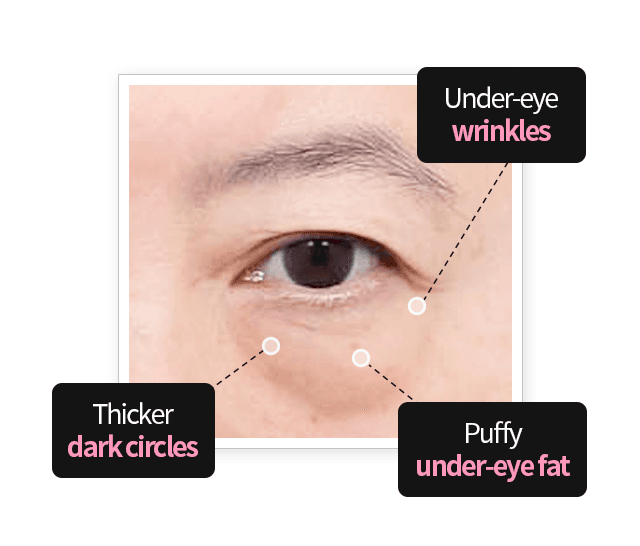
Overview and Purpose:
Blepharoplasty is a surgery that removes extra skin, muscle, and sometimes fat from the eyelids. It targets sagging eyebrows, droopy upper lids, and under-eye bags to create a younger, more rested look. Besides cosmetic benefits, it can improve vision if sagging skin blocks sight. This surgery can be done alone or with other facial procedures like brow lifts or facelifts.
Surgical Techniques:
Blepharoplasty can focus on upper lids, lower lids, or both.
- Upper Eyelid Surgery: Small cuts are made in the eyelid crease to remove loose skin or fat. This helps with droopy lids and can improve vision. Scars are hidden in the crease.
- Lower Eyelid Surgery (Lower Blepharoplasty): Focuses on reducing under-eye bags, puffiness, and excess skin. Fat is repositioned or removed, and tissues tightened to smooth the area between the eyelid and cheek. Modern techniques favor fat repositioning over removal to avoid a hollow look.
Two main approaches for lower blepharoplasty:
- Transconjunctival Approach: Incision inside the lower eyelid (conjunctiva), ideal for younger patients with fat bulges but little loose skin. No visible scars.
- Subciliary Approach: Incision just below the lash line, used when excess skin removal is needed. Scars are fine and hidden in natural creases.
Benefits, Risks, and Recovery:
- Benefits: Younger, refreshed appearance; improved vision if needed; better facial expressions; increased confidence. Results can last many years or a lifetime.
- Risks: General surgical risks like anesthesia reactions and blood clots. Specific risks include infection, bleeding, dry eyes, difficulty closing eyes, visible scars (especially with subciliary), muscle injury causing double vision, skin discoloration, temporary blurred vision, rare vision loss, eyelid malposition (ectropion or lid lag), lumps, hollowed appearance if too much fat is removed, itchy scars, and rare bleeding behind the eye. Follow-up surgery may be needed.
- Recovery: Usually outpatient with same-day discharge after monitoring. Arrange for someone to drive and stay overnight.
- First Few Days: Blurred vision (from ointment), watering, light sensitivity, double vision, numbness, swelling, bruising, and mild pain are common. Ice packs help reduce swelling.
- Ongoing Care: Use prescribed eye drops/ointments, sleep with head elevated, wear sunglasses, avoid blood-thinning meds, and follow surgeon’s instructions.
- Activity Restrictions: Avoid heavy lifting, swimming, jogging, smoking, rubbing eyes, and contact lenses for 1-2 weeks.
- Follow-up: Sutures removed in 5-7 days if non-dissolvable. Bruising/swelling fade in 10-14 days; scars take months to fade. Full results appear after a few months.
- Seek Immediate Help: Contact doctor if severe eye pain, bleeding, breathing issues, chest pain, abnormal heart rate, or sudden vision changes occur.
Under-Eye Fat Removal or Repositioning (Lower Blepharoplasty)
This specialized lower blepharoplasty reduces puffiness and tightens loose skin by smoothing bulging fat pads. Fat is often repositioned to fill hollows like tear troughs, preventing a hollowed look.
Technique choice depends on patient needs:
- Transconjunctival: For fat bulges without much loose skin; incision inside lower eyelid; no visible scar.
- Subciliary: For fat and excess skin removal; incision below lash line; scar is hidden.
Understanding the difference between "eye bag fat reposition" (fat-focused) and "lower blepharoplasty" (fat plus skin) helps patients choose the right procedure.
Benefits and risks mirror those of lower blepharoplasty, including improved appearance and confidence, with risks like ectropion, dry eyes, corneal injury, asymmetry, scarring, and double vision. Recovery involves swelling and bruising fading over 10-14 days, with full healing in months.
Under-Eye Fat Grafting (Fat Transfer)
Purpose and Process:
Fat grafting uses the patient’s own fat to restore volume, fill hollows, and smooth wrinkles around the eyes. It offers natural, long-lasting results and can improve skin quality. This is ideal for aging signs or genetic hollows.
Steps:
- Fat Harvesting: Fat is carefully taken from areas like the abdomen or thighs using liposuction methods that preserve fat cell viability.
- Purification: Fat is cleaned to remove blood, fluids, and damaged cells, ensuring only healthy fat is injected. Nano fat grafting refines fat for delicate under-eye use.
- Injection: Purified fat is precisely injected under the eyes to create smooth, natural contours.
Benefits, Risks, and Recovery:
- Benefits: Long-lasting (often permanent) results, natural feel, improved skin quality, and rejuvenated appearance. High patient satisfaction and self-esteem boost.
- Risks: Swelling, bruising, heaviness, infection risk, over- or under-correction, lumps, donor site scars, delayed healing in some health conditions, and partial fat reabsorption over time.
- Recovery: Mild swelling/bruising for days to weeks; results visible after 4-6 weeks; fat stabilizes in 1-3 months. Avoid strenuous activity for weeks; follow care instructions closely.
- Candidacy: Good health and enough body fat needed. Thin or pregnant patients may not be suitable. Discuss medical history thoroughly.
Comparison: Fat Grafting vs. Dermal Fillers:
- Fat Grafting: Uses own fat, requires minor surgery, longer recovery, potentially permanent results, improves skin quality, fewer allergic reactions.
- Dermal Fillers: Injectable, non-surgical, quick with minimal downtime, temporary (6-18 months), reversible, less effective for deep hollows.
This comparison helps patients choose based on invasiveness, longevity, and desired outcomes.
Table 2: Overview of Under-Eye Surgical Procedures
| Procedure Name | Primary Goal | Key Techniques | Ideal Candidate | Scar Visibility | Durability |
|---|---|---|---|---|---|
| Blepharoplasty (Upper Eyelid) | Remove excess upper lid skin; improve vision | Incision in natural eyelid crease; excision of skin/fat | Droopy upper lids, puffy upper eyelids, obstructed vision | Hidden in crease | Long-lasting, many years/lifetime |
| Blepharoplasty (Lower Eyelid - Transconjunctival) | Reduce lower lid puffiness; manage fat pads | Internal incision (conjunctiva); fat removal/repositioning | Fat pads only; minimal loose skin | No visible scar | Long-lasting, many years |
| Blepharoplasty (Lower Eyelid - Subciliary) | Reduce lower lid puffiness; remove excess skin | External incision (below lash line/crease); fat removal/repositioning, skin excision | Fat pads + significant excess skin/wrinkles | Concealed below lash line (fine) | Long-lasting, many years |
| Under-Eye Fat Removal/Repositioning | Reduce under-eye bags; smooth contour | Transconjunctival (internal) or Subciliary (external) incision; fat redistribution/excision | Bulging fat bags; with or without excess skin | No visible (internal) or concealed (external) | Long-lasting, many years |
| Under-Eye Fat Grafting | Add volume; fill hollows; smooth transition; improve skin quality | Liposuction (fat harvesting); purification; injection of purified fat | Hollows/volume loss; tear troughs; fine lines | Minimal/no visible scar (injection sites); small scars at donor site | Long-lasting, often permanent (for surviving fat) |
Best Clinics in Korea for Undereye Bags
Listed below are the best clinics in Korea for undereye bags:
| Clinic Name | Key Features | Special Techniques |
|---|---|---|
| THEPLUS Plastic Surgery | Located in Gangnam’s Garosu-gil, board-certified surgeons (Dr. Kim, Dr. Jeong, Dr. Lee), global recognition for 3D implants/facial contouring/breast augmentation, strong focus on facial harmony and patient-centered care, active in academic societies, complete in-clinic care from consult to post-op | Advanced under-eye bag surgery, leading rhinoplasty and facial contouring, research-driven techniques, natural, balanced results |
| Made Young Plastic Surgery | Gangnam location, 15+ years dedicated oculoplastic experience by Dr. Park Byung-Chan, all doctors with 15+ years’ experience, one-on-one anesthesiologists, cross-check emergency and CCTV transparency, award-winning clinic (2022 Korea No.1, Customer Satisfaction 1st), recognized by key medical societies, premium aftercare, full spectrum of anti-aging/facial rejuvenation | Personalized undereye bag correction, advanced eye-specific procedures, minimally invasive/anti-aging techniques, rapid recovery focus |
| Okay Plastic Surgery Clinic | Comprehensive aesthetic services in Korea, sincerity/precision/individualized care, led by renowned female surgeon, broad procedure spectrum (eye, body, lifting, rhinoplasty, scar care, skincare), holistic and patient-focused approach | Specialized undereye surgery (puffiness, dark circles, sagging), cutting-edge surgical and non-surgical techniques, innovative facial and body contouring |
THEPLUS Plastic Surgery
Located in the heart of Gangnam’s vibrant Garosu-gil district, THE PLUS Plastic Surgery clinic stands at the forefront of aesthetic medicine in Korea, offering an unparalleled standard of care across a spectrum of cosmetic procedures. The clinic is helmed by a distinguished team of board-certified surgeons: Dr. Kim, recognized globally for his research on 3D implants, facial contouring, and rhinoplasty; Dr. Jeong, President of the Korean Society of Plastic Surgeons and a frequent international speaker on rhinoplasty; and Dr. Lee, a leading expert in breast augmentation with vast experience from top Korean hospitals. Their combined dedication to harmonizing beauty, maintaining facial balance, and providing patient-centered care guides every consultation and surgical plan, ensuring that each client receives individualized attention and natural, enduring results.
THE PLUS Plastic Surgery is renowned for its expertise in facial procedures, including advanced under-eye bag treatments, leveraging both surgical skill and the latest research-driven techniques. The clinic's commitment to safety, continuous education, and innovation is evident in its robust participation in academic societies and international medical symposiums. Patients benefit from comprehensive services—spanning from initial consultation to surgery and postoperative care—all under one meticulously designed roof. With a philosophy rooted in elevating global standards and a track record of excellence, THE PLUS Plastic Surgery is a trusted destination for those seeking superior outcomes in facial aesthetics and undereye bag correction.
You can check out their website here: THEPLUS Plastic Surgery Website
Made Young Plastic Surgery
Made Young Plastic Surgery Clinic: Leading the Way in Undereye Bag Treatment
Made Young Plastic Surgery Clinic, located in the heart of Gangnam, Seoul, is a premium destination for those seeking advanced, natural, and safe solutions for undereye bags and other facial concerns. Specializing in both surgical and non-invasive facial rejuvenation, Made Young is helmed by Dr. Park Byung-Chan, a renowned oculoplastic surgeon with 15 years of dedicated experience focusing exclusively on eye surgeries. Patients frequently choose Made Young for its commitment to artistry, individual attention, and safety—qualities that set the clinic apart as Korea’s leading clinic for undereye bag surgery.
Why Made Young Plastic Surgery is the Best Choice for Undereye Bags:
-
Renowned Eye Specialist: Dr. Park Byung-Chan has over 15 years of experience dedicated exclusively to eye surgery, ensuring unrivaled expertise and consistently beautiful, natural results—even immediately after surgery.
-
Patient-Centered Consultations: From initial consultation to aftercare, patients receive honest, personalized guidance directly from Dr. Park and the medical team, who meticulously customize incision lines, double eyelid height, eyelid thickness, and overall eye image for an individually tailored, harmonious appearance.
-
Verified Medical Team: All procedures are performed by highly skilled doctors with an average of 15 years’ experience, backed by extensive clinical know-how and proven skills.
-
Unmatched Safety Standards: • Full-time, on-site board-certified anesthesiologists provide one-on-one, continuous monitoring for every patient. • Rapid-response cross-check system in place for emergencies. • Full CCTV coverage of procedures ensures unparalleled transparency.
-
Comprehensive Aftercare System: Made Young operates a dedicated aftercare center, guaranteeing structured, thorough post-surgery management for optimal recovery and results.
-
Award-Winning Excellence: The clinic has earned prestigious accolades, including the 2022 Korea No.1 Award and Korea Customer Satisfaction 1st Place, and is officially recognized by the Korean Society of Plastic and Reconstructive Surgeons as well as the Minimally Invasive Aesthetic Surgery Society.
-
Advanced Anti-Aging Specialization: As a premium facial rejuvenation center, Made Young provides a full spectrum of anti-aging and eye procedures, employing the latest technology and techniques for effective, natural, and lasting results.
For those seeking a superior solution to undereye bags in Korea, Made Young Plastic Surgery offers not only top-tier surgical skill but also the comfort, trust, and safety that make for an exceptional patient experience.
You can check out their website here: Made Young Plastic Surgery Website
Okay Plastic Surgery Clinic
Okay Plastic Surgery Clinic stands at the forefront of aesthetic medicine in Korea, offering a wide range of specialized services, including comprehensive solutions for undereye bags. Distinctive in its approach, the clinic emphasizes sincerity, precision, and truly individualized care, ensuring every patient receives treatments tailored to their unique facial anatomy and cosmetic goals. Under the expert guidance of a renowned female plastic surgeon and an accomplished team of specialists, Okay Plastic Surgery takes pride in delivering transformative journeys—prioritizing client well-being and natural-looking results.
The clinic’s portfolio of procedures encompasses not only surgical and non-surgical eye rejuvenation, but also advanced body contouring, breast augmentation, precision hairline corrections, facial lifting, rhinoplasty, scar management, and innovative skincare. Specialized undereye surgery options are meticulously designed to address puffiness, dark circles, and sagging, utilizing cutting-edge techniques for optimal safety and aesthetics. For those seeking holistic and personalized care to refresh their appearance, Okay Plastic Surgery Clinic offers a comprehensive, patient-centered experience fuelled by medical expertise and genuine empathy.
You can check out their website here: Okay Plastic Surgery Clinic Website
Medical Tourism in South Korea: A Practical Guide
South Korea is a global leader in cosmetic surgery, known for advanced techniques, skilled surgeons, and competitive prices. Here’s what to expect when considering under-eye procedures there.
The Process of Undergoing Under-Eye Procedures in South Korea
Initial Research and Consultation:
Start with thorough research focusing on reputable clinics and experienced surgeons. Avoid relying solely on online reviews or social media influencers, as these may not reflect quality. Look for clinics with international accreditation, such as from the International Joint Commission. Seek testimonials from real international patients. Many clinics offer online consultations, allowing you to discuss goals remotely. Advanced tools like 3D modeling and AI simulations help visualize results and set realistic expectations.
Pre-Surgery Preparation:
Beyond avoiding alcohol and smoking weeks before surgery, discuss diet and supplements with your surgeon. Anti-inflammatory foods (turmeric, ginger, omega-3s) can aid healing. Ask about supplements like Vitamin C, Zinc, and Arnica. Inform your surgeon about all medical conditions and medications, especially blood thinners, which may need to be stopped.
Navigating Language Barriers and International Patient Support:
Many clinics have English-speaking surgeons, but language barriers can still occur, especially with detailed post-op care. Choose clinics with international patient managers and interpreters to ensure smooth communication throughout treatment and recovery.
The Surgical Experience and Immediate Aftercare:
Procedures are usually outpatient with monitoring for 30+ minutes before discharge. Arrange for someone to drive you home and stay overnight. Use ice packs for 24-48 hours to reduce swelling, then follow surgeon advice on compresses. Use prescribed eye drops or ointments to prevent infection and dryness.
Post-Operative Recovery and Follow-Up Planning:
Expect blurred vision, watering, light sensitivity, double vision, numbness, swelling, bruising, and mild discomfort. Sleep with your head elevated to reduce fluid buildup. Avoid strenuous activities, smoking, rubbing eyes, and contact lenses for 1-2 weeks. Sutures, if non-dissolvable, are removed in 5-7 days. Bruising and swelling fade in 10-14 days; subtle swelling may last months. Full results appear after a few months. Protect eyelid skin from sun with sunglasses and sunscreen. Regular follow-ups are essential.
Travel and Accommodation Considerations:
Seoul is the main hub for plastic surgery. Stay near your clinic for easy follow-ups and quick access to care. Many clinics, like AB Plastic Surgery Korea, offer recovery accommodations and transportation as part of packages. These comprehensive packages simplify logistics and reduce stress. Check visa requirements early and avoid major holidays like Chuseok or Lunar New Year when clinics are busy. Spring and fall offer better weather and less crowded clinics. Also, consider a mental health check before and after surgery to manage emotional impacts, reflecting a holistic approach to patient care.
Costs of Under-Eye Procedures in South Korea
South Korea offers competitive pricing compared to Western countries.
Under-Eye Fat Removal/Repositioning:
Prices range from about $1,600 to $2,800 USD (₩2,500,000 to ₩4,000,000 KRW).
Blepharoplasty:
Costs generally range from $2,100 to $5,600 USD (₩3,000,000 to ₩8,000,000 KRW), depending on complexity and surgeon reputation. Lower eyelid surgery falls within the $1,600 to $2,800 range.
Under-Eye Fat Grafting:
Often priced between $700 and $1,400 USD (₩1,000,000 to ₩2,000,000 KRW) for localized procedures. However, full facial fat grafting, including liposuction, anesthesia, and aftercare, can cost $3,500 to $8,000 USD. This discrepancy means patients should request detailed cost breakdowns to know exactly what’s included.
What’s Typically Included in Korean Medical Packages:
Packages often cover surgery fees, pre-op consultations and tests, hospitalization and medication, accommodation, transportation, multilingual support, hyperbaric oxygen therapy, follow-up care, blood transfusion packs if needed, pre- and post-op guidance, VAT refunds for foreigners, and promotional discounts. A 10% deposit usually secures appointments.
Cost Comparison: South Korea vs. Other Countries (Medical Tourism Perspective)
Table 3: Comparative Costs of Under-Eye Procedures Across Key Medical Tourism Destinations (USD)
| Procedure | South Korea (USD) | USA (USD) | UK/Europe (USD) | Thailand (USD) | Turkey (USD) |
|---|---|---|---|---|---|
| Lower Blepharoplasty / Under-Eye Fat Removal/Repositioning | $1,600 - $2,800 | $4,000 - $7,500 | $2,700 - $7,000 | $1,355 - $1,791 | $1,900 - $5,500 |
| Blepharoplasty (Overall) | $2,100 - $5,600 | $6,500 - $11,000 | $2,700 - $7,000 | $1,455 | $1,900 - $3,000 |
| Under-Eye Fat Grafting | $700 - $1,400 (Under-Eye) OR $3,500 - $8,000 (Facial) | $3,500 - $8,000 | $2,000 - $5,000 | $1,950 - $5,000 | $1,125 - $2,813 |
South Korea stands out for:
- World-class surgeons and advanced technology.
- Comprehensive care packages simplifying the patient journey.
- Minimal waiting times.
- Emphasis on natural, harmonious results.
While Thailand and Turkey may offer slightly lower starting prices, South Korea’s quality, technology, and patient support make it a top choice for many medical tourists.
Patient Experiences and Outcomes
Patients report significant improvements after under-eye procedures, both aesthetically and psychologically.
Aesthetic Improvement:
Many feel they look younger, refreshed, and less tired. Procedures reduce puffiness and dark circles by addressing fat and skin laxity. For example, J. Andrews, after transconjunctival blepharoplasty and fat transfer, said her "face regained symmetry and a youthful freshness." Joanna B. noted her "bags have completely disappeared" and cheekbones are enhanced. Patients often achieve natural looks, with no obvious signs of surgery. Lower blepharoplasty with fat repositioning is praised for rejuvenating without hollowing.
Psychological Impact:
Patients frequently experience boosted self-confidence and self-esteem. Some feel like their true selves again, with transformations making a real difference in how they see themselves. For example, K. C., treated for a venous malformation, felt "fabulous and youthful again." S. L., with congenital facial palsy, reported a "huge difference" and renewed confidence. Moving from "you look tired" to "you look well" can greatly affect daily life.
Recovery Experience:
Though bruising and swelling can be "a bit scary," pain is usually minimal. Many describe quick recovery with little discomfort. E. P. shared that despite swelling and bruising for two weeks, she had "no pain" and looked "relatively normal" by three weeks. Most resume social activities within 10-14 days.
Satisfaction with Results:
Overall satisfaction is high, with results often exceeding expectations. Changes are subtle yet extraordinary, enhancing features naturally. Longevity is another plus, with some maintaining results for years. M. B. was told by friends she looks as she did at 30, highlighting natural transformation.
Surgeon and Clinic Experience:
Patients appreciate professionalism, clear communication, and feeling well-informed, which greatly contributes to positive experiences.
These stories show that skilled under-eye procedures can effectively improve appearance and confidence, enhancing quality of life.
Conclusions and Recommendations

Under-eye bags—marked by puffiness, sagging skin, and dark circles—are a common cosmetic concern that can deeply affect self-esteem. Treatments range from lifestyle changes to advanced surgeries.
Surgical options like blepharoplasty, fat removal/repositioning, and fat grafting offer targeted, often long-lasting improvements. Modern approaches focus on natural results, favoring fat repositioning and grafting to avoid hollow looks. Procedure choice depends on individual anatomy, such as excess skin versus volume loss.
South Korea is a top medical tourism destination, combining competitive prices with high-quality care and advanced technology. Comprehensive packages simplify the patient journey by including consultations, surgery, aftercare, accommodation, and multilingual support.
Patient testimonials confirm these procedures’ positive impact on appearance and confidence, with manageable recovery and high satisfaction.
For those considering surgery, especially abroad, key advice includes:
- Research accredited clinics and seek genuine patient feedback.
- Use detailed consultations and visualization tools to set realistic goals.
- Understand all costs with clear itemization.
- Choose clinics offering strong communication support.
- Plan adequate recovery time near the clinic.
- Follow pre-op instructions carefully and prepare for emotional effects.
- Maintain realistic expectations about results and healing.
With informed decisions and realistic goals, patients can successfully address under-eye bags and enjoy natural, confidence-boosting outcomes.
References
1, 2, 3, 4, 5, 6, 7, 8, 9, 10, 11, 12, 13, 14, 15, 16, 17, 18, 19, 20, 21, 22, 23, 24, 25, 26, 27, 28, 29, 30, 31, 32, 33, 34, 35, 36, 37, 38
